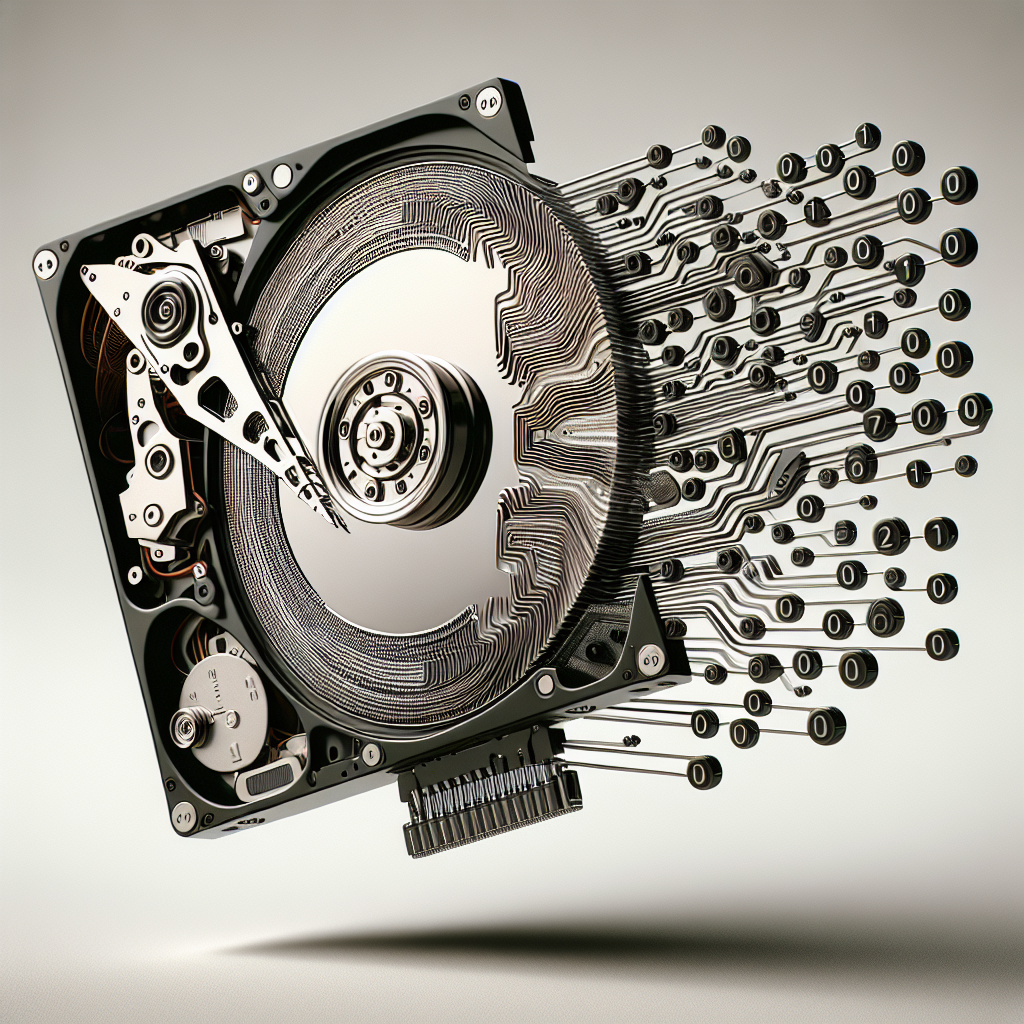Your cart is currently empty!
Exploring the Inner Workings of a Hard Disk Drive: How Data is Stored and Accessed

In today’s digital age, hard disk drives (HDDs) play a crucial role in storing and accessing vast amounts of data. These devices are found in almost every computer, laptop, and server, and are essential for storing everything from operating systems and applications to documents, photos, and videos.
But have you ever wondered how data is actually stored and accessed on a hard disk drive? In this article, we’ll explore the inner workings of an HDD and explain the intricate process of storing and retrieving data.
At the heart of a hard disk drive is a spinning platter coated with a magnetic material. This platter is divided into billions of tiny areas called sectors, where data is stored in the form of magnetic patterns. A read/write head hovers just above the platter, moving back and forth to read and write data to specific sectors.
When data is written to a hard disk drive, the read/write head magnetizes the surface of the platter to represent binary 0s and 1s, the building blocks of digital information. These magnetic patterns are then stored on the platter until they are accessed again.
To retrieve data from a hard disk drive, the read/write head locates the specific sector where the data is stored and reads the magnetic patterns to reconstruct the original information. This process happens incredibly fast, with the read/write head moving at speeds of thousands of revolutions per minute to access different areas of the platter.
One of the key factors that determines the performance of a hard disk drive is its speed, measured in rotations per minute (RPM). Higher RPM drives can access data more quickly, making them ideal for applications that require fast read and write speeds.
In addition to speed, the capacity of a hard disk drive is also an important consideration. Modern HDDs can store terabytes of data, making them suitable for storing large files such as videos, games, and high-resolution photos.
While hard disk drives have been a staple of computing for decades, they are gradually being replaced by solid-state drives (SSDs) in many applications. SSDs use flash memory to store data, offering faster read and write speeds and greater durability compared to HDDs. However, HDDs continue to be popular for their affordability and high storage capacities.
In conclusion, the inner workings of a hard disk drive are a fascinating blend of mechanical and magnetic technologies that enable us to store and access vast amounts of data. By understanding how data is stored and accessed on an HDD, we can appreciate the complexity and precision that goes into this essential component of modern computing.

Leave a Reply